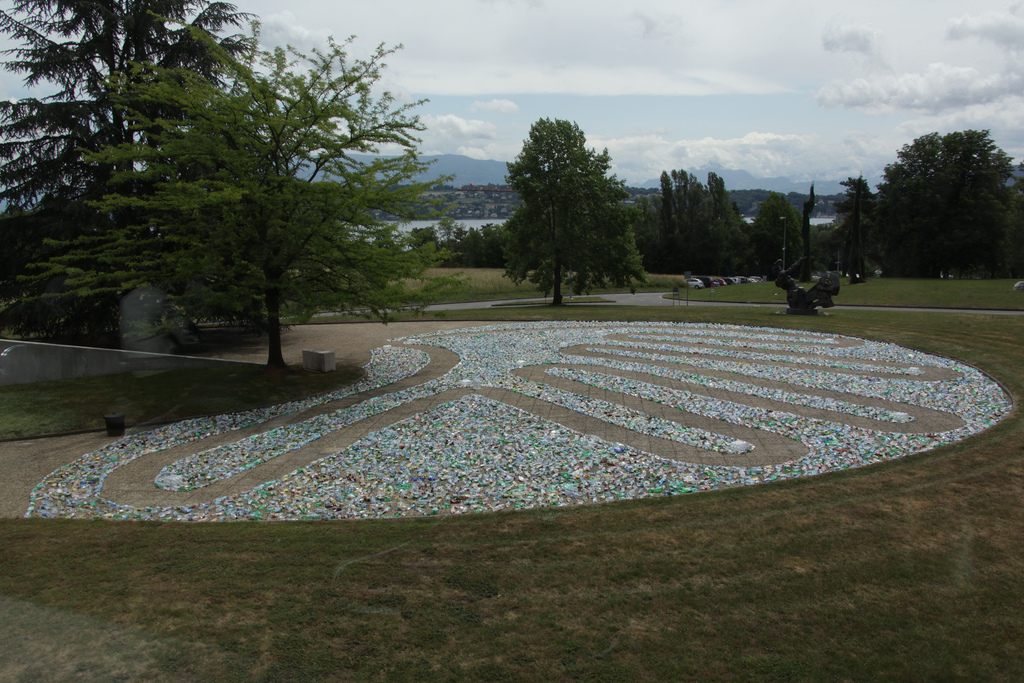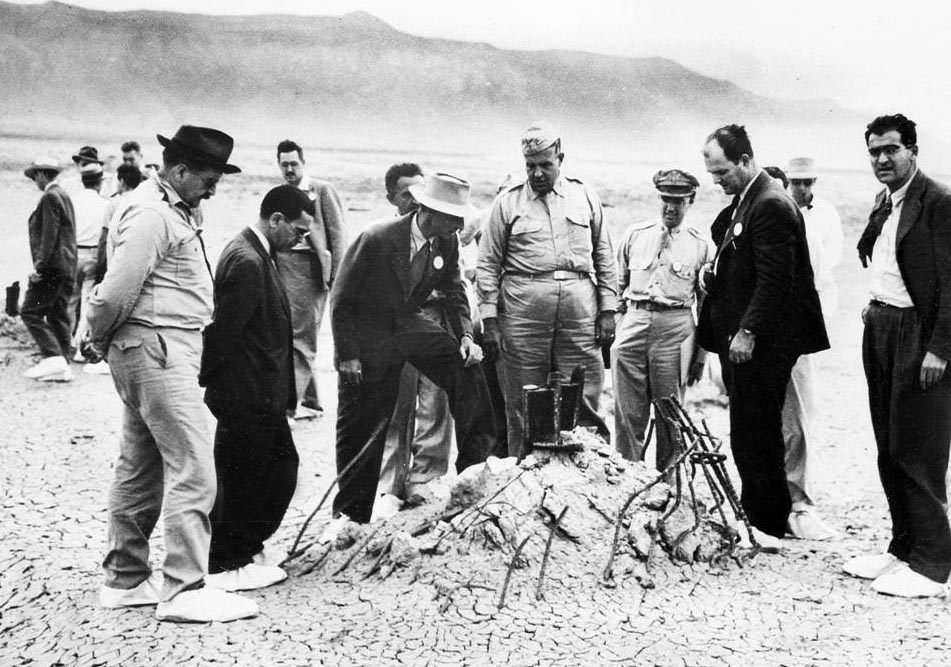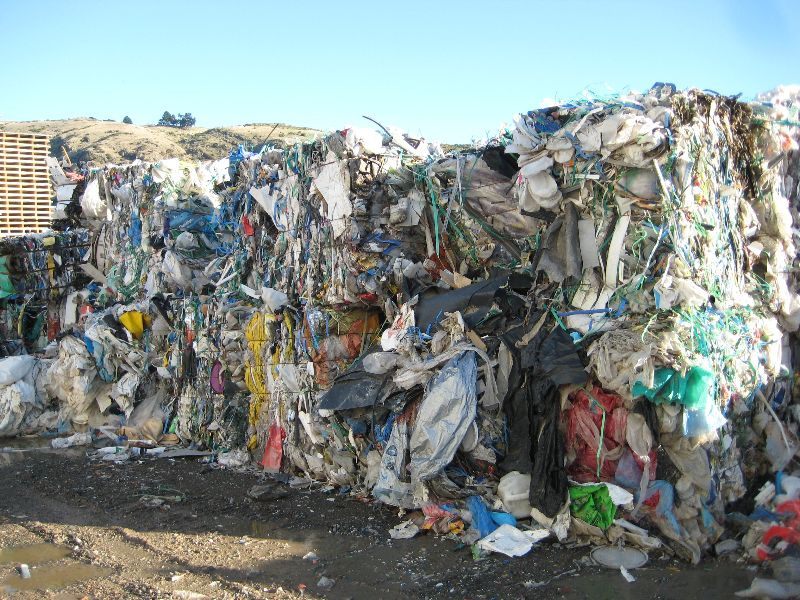Stone Age, Bronze Age… Plastic Age? The Race to Define Our Epoch

“Recycling Labyrinth,” by Mona Sfeir, a maze entirely made out of plastic bottles. (Photo: United States Mission Geneva/Flickr)
When archaeologists look back at history, certain materials rise to the top—the Bronze Age, the Stone Age, the Iron Age, and so on. Though they’re far from exact, each shorthand helps give an idea of what the people who lived then were capable of–Stone Age humans could control fire and make sharp objects, Bronze Agers formed trade networks to exchange metals and other goods, and denizens of the Iron Age could forge cheaper tools, which let them form more permanent settlements.
According to experts, though, the Iron Age ended around 550 B.C.E. This begs the question–what about us? Of all the materials out there, what bundle of atoms is most likely to define our age?

Archaeologists aren’t the only ones who seek meaning in the stuff that surrounds us. Like their Stone, Bronze and Iron Age counterparts, today’s engineers and inventors are both constrained and inspired by the materials available to them. And as humans mold more and more of the planet, the impacts of our material choices only increase–just this past week, a team of geologists announced that there is enough human-made gunk in the geologic record to constitute a whole new epoch, called the Anthropocene. We spoke to a few experts across these disciplines, and asked them to clue us in on the right stuff.
SILICON

A semiconductor standard cell, close up. The pink parts are silicon. (Photo: David Carron/WikiCommons CC BY-SA 3.0)
Deb Chachra, an assistant professor of materials scientist at Olin College, is constantly thinking about how particular properties of stuff influence our world. “Having new technologies makes things possible that were previously not,” Chachra said in a phone interview, “and often, new materials enable new technology.” Thus, the types of buildings, gadgets, and infrastructure we can build at any given time are as dependent on the materials we have available as they are on other factors like energy, labor, or ingenuity.
“In the modern age, silicon is a classic example of that,” Chachra says. Though silicon oxide is extremely common–silicates make up about 90 percent of the Earth’s crust–production of the pure element, which is a vital ingredient in nearly all electronics, was only possible on a large scale starting in the 1850s. “Having access to extremely pure silicon that you can turn into semiconductor transistors enables us to do things well that were basically unthinkable half a century ago, including [making] this phone I’m talking on… if I was an archaeologist digging up our civilization in ten thousand years, I would be excited to find silicon,” said Chachra.
ALUMINUM

Detail from a bale of aluminum cans. (Photo: Mojave Desert/Flickr)
Pure aluminum was once so rare, it was more valuable than gold. After the development of the Hall–Héroult process, an electrical breakthrough that enabled its refinement, the shiny metal began a world takeover. Aluminum is stiff and lightweight and barely corrodes, a unique combination that makes it vital for a few different industries. In addition to its contributions to can- and foil-making, aluminum availability ”opened up aerospace technology,” and thus civil aviation, Chachra says. “Immigration, long supply chains, cargo 747s–all those things were enabled by aluminum.”
NUCLEAR FALLOUT

Robert Oppenheimer and other Trinity bomb test personnel, wearing white oversoles to protect their shoes from nuclear fallout. (Photo: United States Department of Energy/WikiCommons Public Domain)
The aforementioned team of geologists looked at everything from methane to concrete in their attempt to define the Anthropocene. At a later stage in the process, they will have to pick just one material whose sudden increase–called a “Golden Spike”–proves the advent of a new epoch. Although ”it’s perhaps too early to pick one that’s going to be relevant,” an early frontrunner is nuclear fallout, said team member Colin Waters in a phone interview. After a nuclear blast, residual radioactive dust begins collecting in nearby soil. “Many of those signatures are pretty novel in the environment,” Waters says. Plutonium, for example, ”appears around 1952 and spreads quickly around the planet… it’s is moderately easy to pick up in many different types of sediment, and in ice as well.”
ELECTRICITY

A couple of pylons send electricity across the UK. (Photo: Nick Page/Flickr)
Professor Curtis Runnels, chair of the archaeology department at Boston University, is throwing his hat in the ring for a somewhat less material material. “The defining technology [and] economy of the present world… is that we are in an age when electricity is necessary for EVERYTHING,” writes Runnels in an email. ”Our entire industrial-urban-technological civilization depends upon electricity… It is as fundamental as stone, bronze or iron were to our forebears.” He suggests doubters try a thought experiment: “Imagine your life without it (and using batteries does not count!).”
PLASTIC

Plastic refuse hangs out at a dry waste facility. (Photo: Sustainable Initiatives Fund/Flickr)
The one material named by nearly all sources, across disciplines, was plastic. Plastic “has redefined our material culture and the artifacts we leave behind,” and “will be found in stratified layers in our trash deposits,” wrote archaeologist John Marston in an email. Of the materials Chachra considers age-defining, she says plastic is “the most ubiquitous”–even if it’s also the hardest to trace to particular large-scale social changes. “There’s far more plastic in the world than people think about,” she says, including paint, wallpaper, carpeting, and furniture coatings.
According to Waters, plastic also has a good shot at being the prime definer of the Anthropocene. From a geological perspective, “plastic is very quickly spreading across the planet,” says Waters, and although it breaks down eventually, “things like the colorants and the plasticides within it may still be preserved.” Which means we may not just be in the plastic age–we may be in the plastic epoch.
Naturecultures is a weekly column that explores the changing relationships between humanity and wilder things. Have something you want covered (or uncovered)? Send tips to cara@atlasobscura.com.










Follow us on Twitter to get the latest on the world's hidden wonders.
Like us on Facebook to get the latest on the world's hidden wonders.
Follow us on Twitter Like us on Facebook